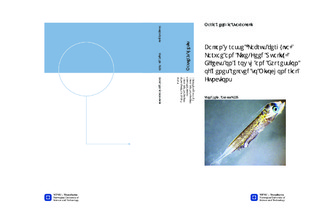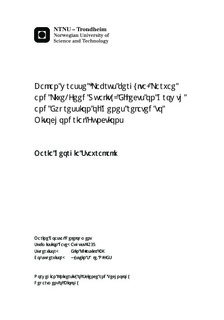| dc.description.abstract | Salmon production is threatened by sea louse Lepoptheirus salmonis, affecting both the environment and the industry?s economy. Use of the cleaner fish ballan wrasse (Labrus bergylta) is a promising method of salmon delousing with good results. The individuals used in salmon farms have so far derived from wildfish catches, but there is now interest in ballan wrasse aquaculture, as a more sustainable and environmental-friendly solution.During this experiment ballan wrasse larvae were fed with either enriched rotifers Brachionus sp., followed by enriched Artemia franciscana (Rot treatment) or with reared copepods Acartia tonsa (Cop treatment) until 45 day post hatch. This is probably the first study on ballan wrasse larvae with copepods as exclusive first feed. Larvae of the two treatments were compared for growth, survival and expression of seven genes (cyc1, cox5a, mnsod, fxn, crls1 and pla2g6 ) whose encoding products are localized in the mitochondrion. All genes were related to oxidative phospholyration, with two of them being parts of the final complexes of the electron transport (cyc1, cox5a).Cop larvae had a significantly higher growth during the whole experiment, while survival did not differ significantly. Gene expressions had good correlations with the larval standard length, implying that body size is more reliable than age for denoting the larval development. All genes except pla2g6 were higher expressed for the Cop treatment during the first 8 days post hatch, suggesting higher mitochondrial activity and energy (ATP) generation for the initial larval period. Specifically cox5a expression corresponded with larval dry weight increase, implying a strong molecular effect of the initial diet quality on cellular energy generation and growth. The present study underlines the importance of diet quality during the early days of the ballan wrasse life and results confirm other studies stating that reared A. tonsa is an optimal fish larval live feed for this period. Results also imply that copepods have a positive impact on the mitochondrial respiration, especially for the early larval days. | nb_NO |

